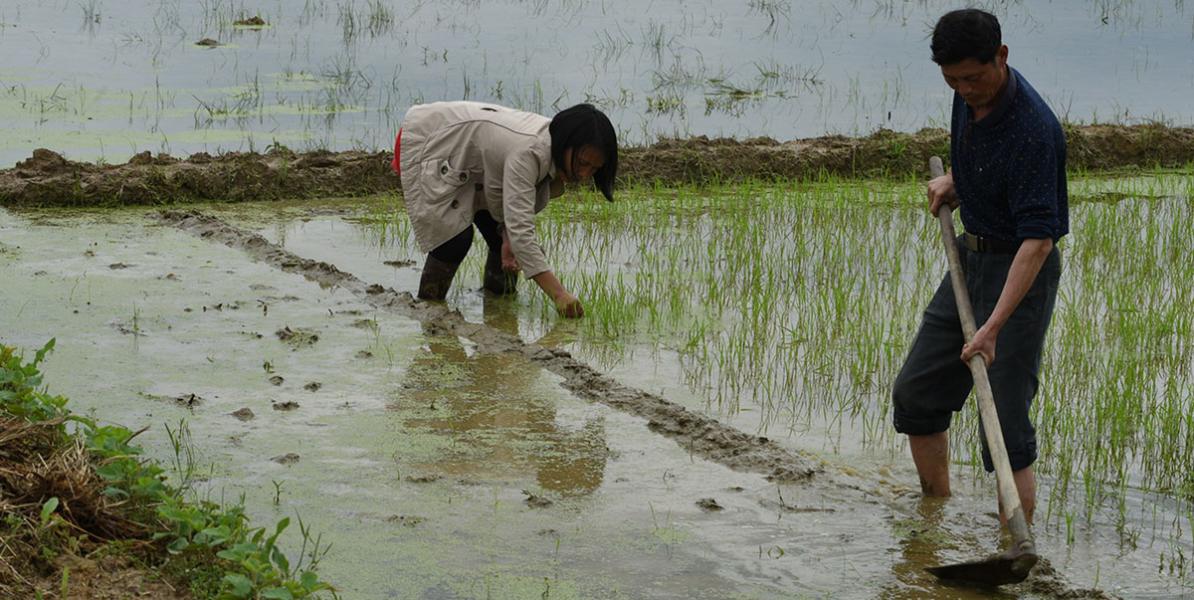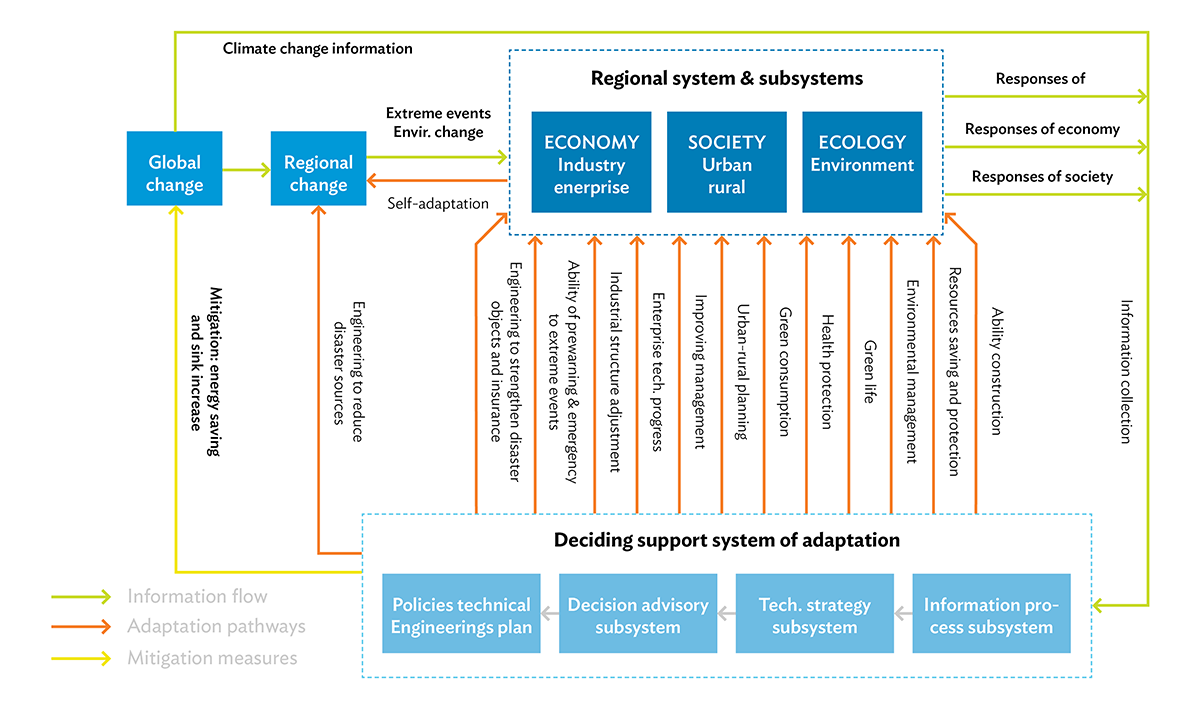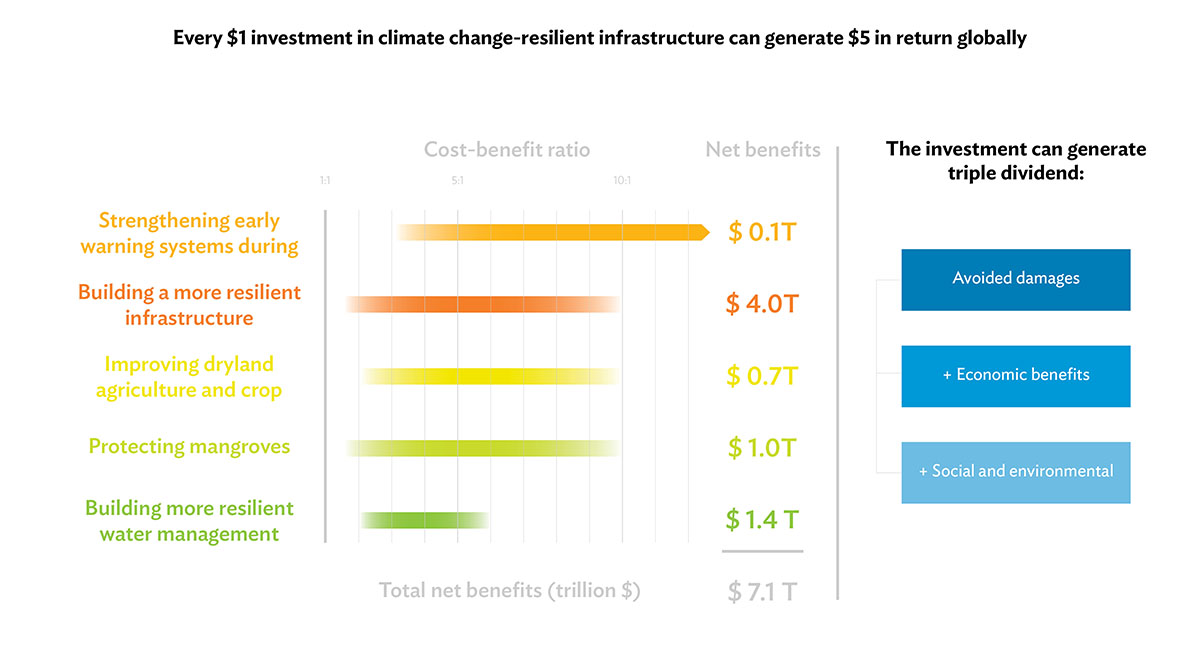East Asia Blog Series
Climate Change Adaptation Strategy of the PRC
Thomas Panella, Dongmei Guo and Silvia Cardascia 4 Nov 2022
The National Climate Change Adaptation Strategy 2035 emphasizes nature-based solutions, a region-specific approach, and climate-resilient investments.
Overview
Along with greater natural hazard risks and changes to terrestrial and aquatic ecosystems, climate-related economic losses have increased significantly over the last decades. Between 1990 and 2019, damage to property, crops, and livestock from disasters triggered by natural hazards in the Asia and Pacific region amounted to almost $1.5 trillion. In 2020 alone, Asia’s overall losses related to natural hazards amounted to $67 billion, of which only $3 billion, or less than 5%, were insured. Global climate change and frequent extreme weather events seriously threaten the development and even survival of humanity, leading to a global consensus that active measures must be undertaken.
In response to the worsening climate crisis, the People’s Republic of China (PRC) has been developing its National Strategy for Climate Change Adaptation 2035 (NCAS). The strategy puts forward an ecosystem-based approach to cover both natural ecosystems—including water resources, terrestrial ecosystems, and marine and coastal zones; and social and economic systems—including agriculture and food security, public health, infrastructure, urban and industrial development, of sensitive secondary and tertiary industries. It encourages the mainstreaming of climate adaptation with ambitious targets for all sectors and regions by 2035. It also prioritizes climate change monitoring, early warning system, risk management, and investments in a climate-resilient future.
To ensure implementation is tailored to a variety of contexts, the national adaptation strategy considers geographic characteristics and spatial planning. As such, the strategy’s implementation focuses on economic and ecological zones in the PRC, including Beijing-Tianjin-Heibei, Guangdong-Hong Kong-Macao Greater Bay Area, the Yangtze River Delta, the Yangtze River Economic Belt, and the Yellow River Basin.
This article summarizes some of the key discussion points shared at the 22 June 2022 Final Review Workshop of the Climate Change Fund (CCF) Project on Developing National Climate Change Adaptation Strategy 2035.
Climate Adaptation of Natural Ecosystems
Water sits at the center of the PRC’s adaptation efforts in many ways. Like many other countries, the PRC is exposed to droughts and floods of greater severity exacerbated by climate change impacts. Severe floods during the 2020 summer monsoon in the Yangtze River Basin were among the costliest disasters. Losses amounted to approximately $17 billion, of which only around 2% were insured. Water scarcity is also a concern in many provinces, particularly in the upper Yellow River Basin, which is affected by frequent droughts.
The NCAS emphasizes the importance of resilient water management systems and increasing investments to adapt to periods of both too much and too little water. This means integrating grey and green infrastructure, such as building reservoirs or sponge cities, as well as educating the public about saving water during periods of drought and raising general awareness of water-related ecosystem services. This also involves strengthening biodiversity or urban cooling during heatwaves, and developing innovative, community-led flash flood early warning systems.
Becoming an “ecological civilization” implies working in harmony with nature to adapt to climate change. Rural areas, which are often the most affected, are the most dependent on ecosystem services. It has long been recognized that restoring ecosystems promotes synergies between ecological conservation, sustainable livelihoods, and adaptation. To this end, the strategy highlights climate-resilient agriculture as key to food security. From a natural ecosystem perspective, a diversification of crops that can better absorb excessively dry or wet periods and smart farming practices, such as a less proliferate and more effective use of pesticides, will contribute to climate adaptation in rural areas while diversifying income streams.
Protecting marine biodiversity also increases resilience to climate change impacts, such as rising temperature, and protects livelihoods that depend on fisheries or ecotourism. This creates the basis for a blue economy and opportunities for future generations.
Climate Adaptation of Economic and Social Systems
There is a panoply of measures that governments and societies must take to ensure economic and social systems can thrive in a changing climate. Fundamentally, the NCAS recognizes the importance of strengthening green industrial development for adaptation purposes. In practice, this means steering vulnerable industries in the right direction through policies and regulations. This also entails modernizing and climate-proofing public infrastructure with different approaches to urban planning.
The strategy highlights the importance of effective climate risk assessment and monitoring in ensuring continued economic activity and investment amid adaptation efforts. Risk analysis shows how natural hazards can be avoided or the necessary measures to mitigate risks and improve resilience.
Digitalization will play a critical role in mainstreaming climate adaptation across all sectors, especially in risk assessment and early warning systems. By 2035, the national strategy envisions a climate risk management digital platform that provides weather and climate forecasts with seamless full coverage and intelligent and digital functions to assess specific risks. This platform will require close coordination among 17 ministries for effective planning, allocation of resources, and joint emergency response.
Region-Specific Approach to Adaptation
The adaptation strategy of the PRC is based on geographic characteristics and regional spatial plans to ensure recommendations are relevant and impactful for key zones. The Yellow River and the Yangtze River basins are two of the key geographical units prioritized for enhanced basin-wide climate adaptation.
Figure 1: Basic Frame of Regional Adaptation

The strategy emphasizes the importance of an adaptive economic and social basin system. For example, creating ecological corridors can help maintain and restore ecological connectivity and ecosystem integrity while promoting high-quality green development in the Yellow River Basin— the second largest river basin of the PRC.
A region-specific approach builds on stakeholder engagement and accountability. Local knowledge is important in formulating local adaptation plans. Consulting stakeholders strengthens community-led initiatives and recognizes local expertise and knowledge in tailoring adaptation efforts to specific locations. Establishing resilience at the community level first enables local communities to understand the relationship between the ecosystem and society.
Recommendations
While more countries around the world embrace climate action and green development, policy and regulatory gaps remain, and private sector investments continue to be lacking. The economic slowdown triggered by COVID-19 and the reallocation of government spending toward emergency response initially contributed to widening these gaps. However, governments have since strengthened their climate commitments and dedicated more resources to green development and improving climate resilience, realizing that safeguarding the environment also translates to safeguarding businesses and the economy. Yet, more is needed. The PRC alone requires about ¥1.6 trillion RMB (about $22 billion) annually to achieve its national adaptation targets.
Figure 2: Climate Adaptation Delivers High Economic Returns

Scaling up nature-based solutions can help protect, sustainably manage, and restore natural and modified ecosystems to address societal challenges effectively and adaptively, benefitting human and nature.
Adaptation efforts should find worthy allies across other branches of government. The judiciary can act as a key player in implementing adaptation legal frameworks, holding government and private entities liable for environmental offences, and using laws and regulations to protect, promote, and instigate adaptation initiatives.
To activate plans for climate action, financial resources must be pooled and options, such as working with financial institutions (domestic, international, and private), must be considered. Cooperative financing models can be used to bring adaptation forward, especially at the provincial and sub provincial levels.
NOTE: The official version of the “National Climate Change Adaptation Strategy 2035” is in Chinese. Here is the link to the English translation if you wish to read or learn more about this strategy.
Authors

Thomas Panella
Director, Environment, Natural Resources and Agriculture Division, East Asia Department, ADB

Dongmei Guo
Environment Specialist, Environment, Natural Resources & Agriculture Division, East Asia Department, ADB

Silvia Cardascia
Water Resources Specialist, East Asia Department, Asian Development Bank
This blog is reproduced from Development Asia.


